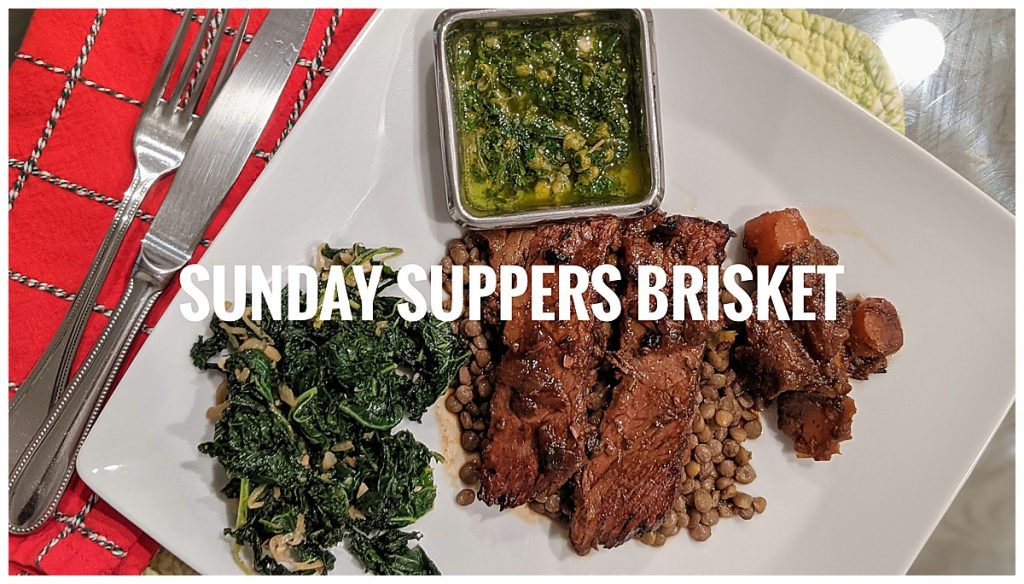

I was gifted a copy of Sunday Supper’s by Suzanne Goin some 15 years ago. In that time I have probably prepared a handful of recipes which is more a reflection of the involvement the book requires. Broken up be Seasons, you would be wise to stick to the one you are currently in and have access to a good Farmer’s Market. True to the chef’s resumé and accolades, this book is not for the novice cook nor a busy weeknight.
But my God is this Sunday Supper’s Brisket worth the effort. It has become my new night before Christmas Eve dinner tradition. And when you make it, it might become yours as well . . .




This Sunday Supper’s brisket is a reduced version from the original recipe which calls for a 6 pound brisket. All the basics of a braise are at play here: aromatic vegetables, stock, garlic and herbs. What sets this braised brisket apart from a classic Jewish version is the exclusion of any canned tomato product and the addition of Guinness. It’s not your Bubbie’s brisket but it is a very comforting recipe.
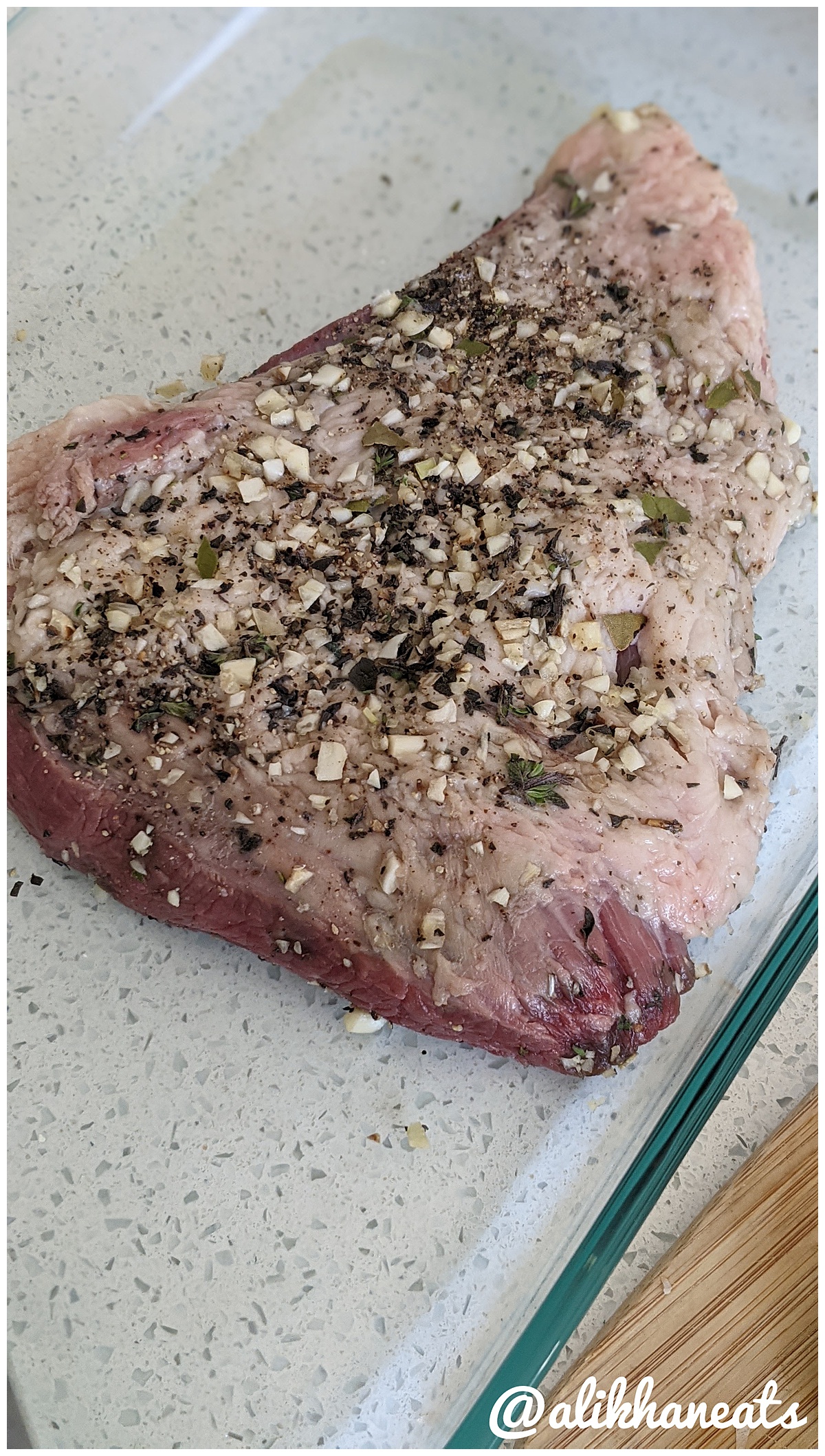

. . . so technically your Sunday Supper’s brisket starts on Friday. I trimmed my brisket of some of the fat and rubbed it with the chopped garlic and herbs and stuck it in the fridge overnight. This might seem like something you could skip but I was so happy with the flavor results that I incorporated the same technique with my Christmas Eve Prime Rib.
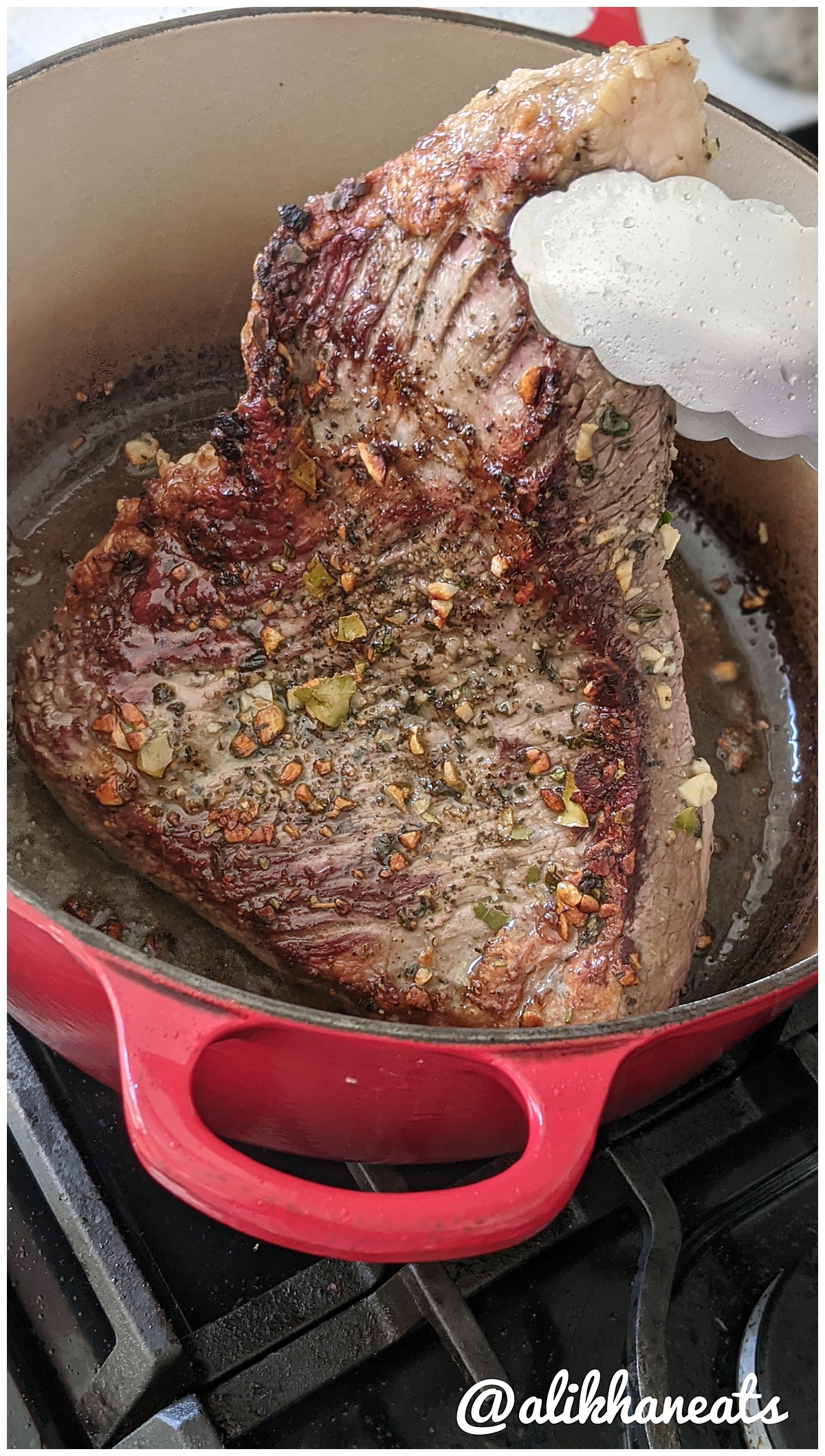

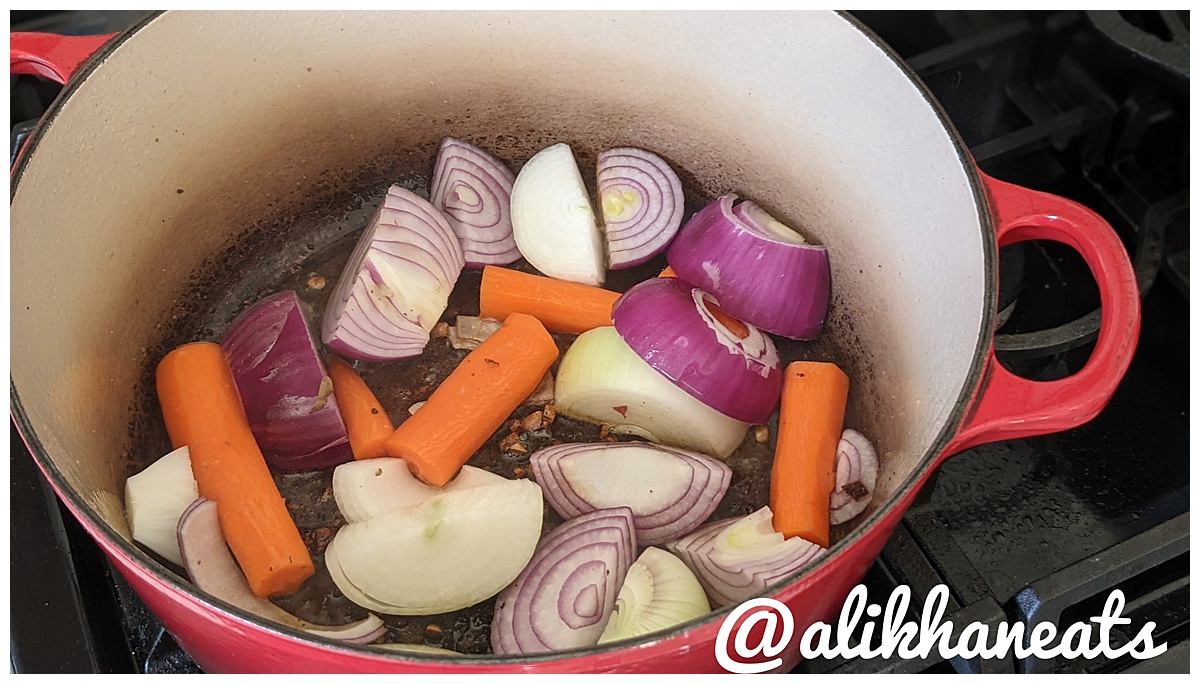

The following day, remove the brisket from the fridge and bring it to room temp, about an hour. Heat a couple tablespoons of olive oil over a medium high heat. Sear the brisket on both sides and remove. Add the aromatic vegetables.
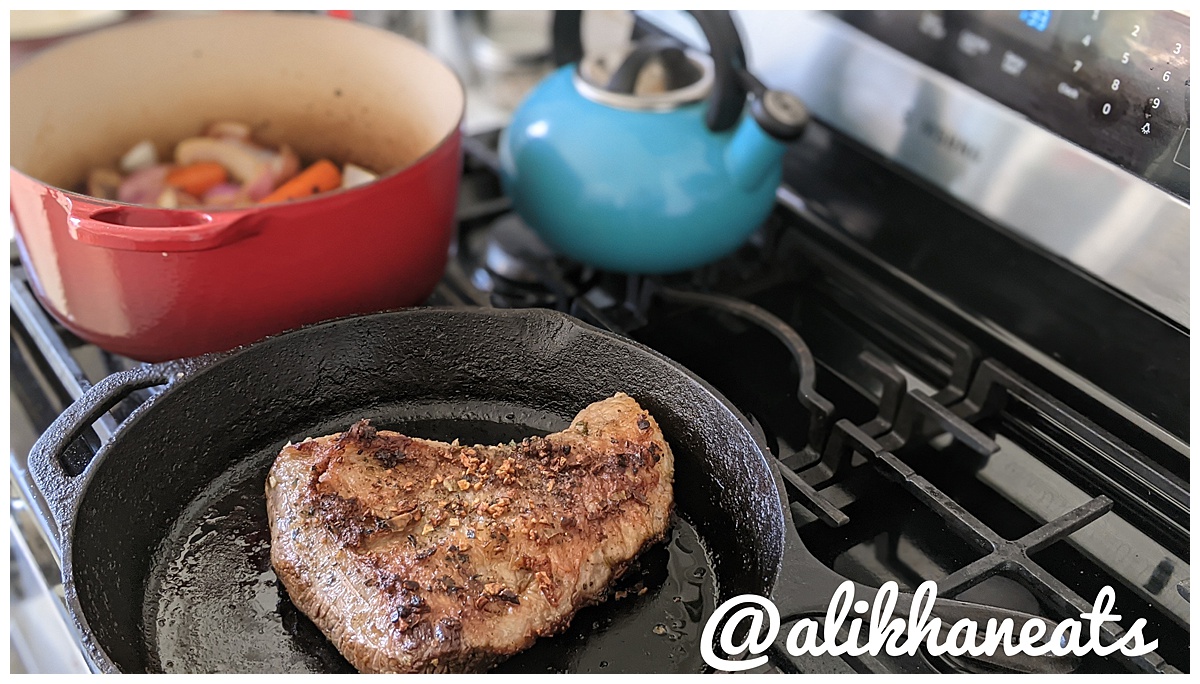

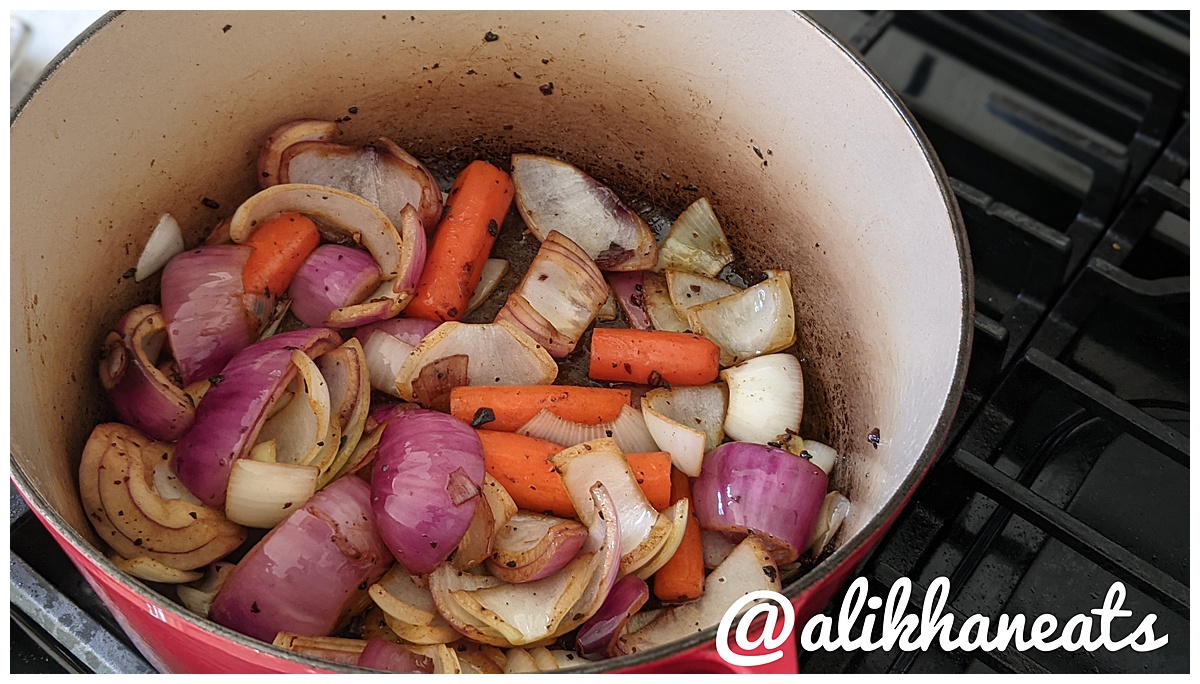

I like to land somewhere in between translucent and golden brown, usually landing on the earlier side of caramelization. Now let’s add the liquids.




Add the balsamic vinegar, Guinness and beef stock. Bring to a boil and then reduce the liquid to a simmer. By the way, adding Guinness at this stage make for great pics . . . keep your phone handy.
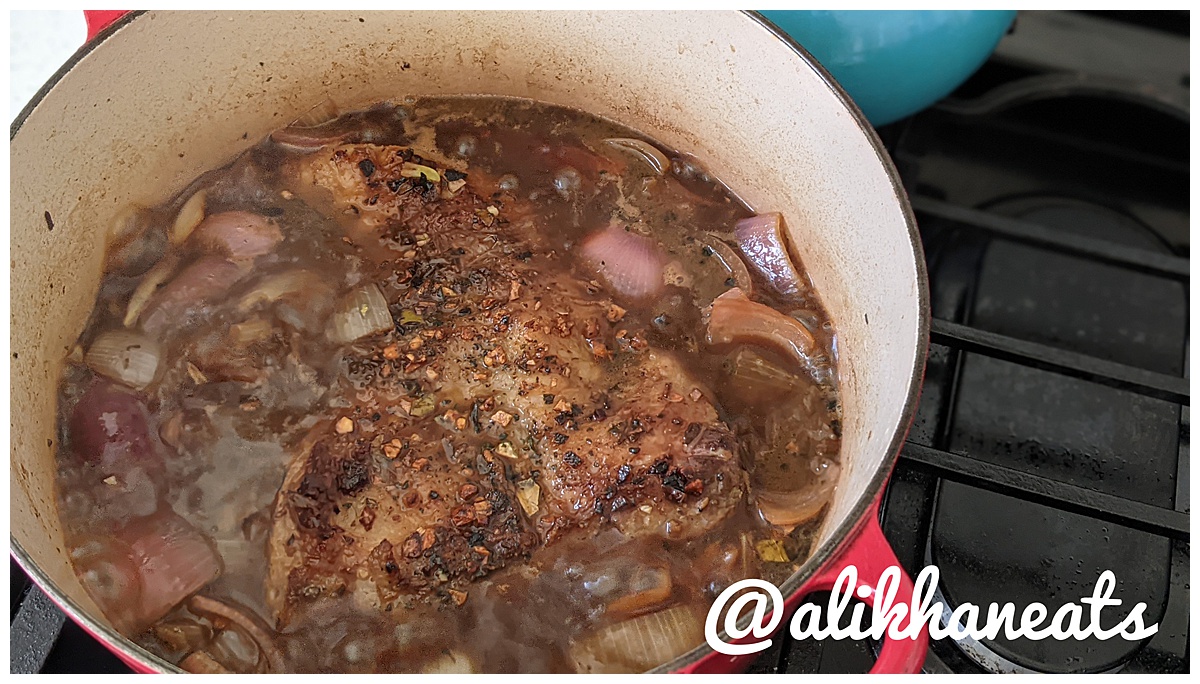

Return the brisket back into the pot and bring to a high simmer. Slap the lid on and stick it in a preheated 300 degree oven for three hours or so. Normally I would advocate for an internal temp(somewhere between 175-200 degrees) but a jab with fork will tell you if it’s tender.


Three hours later. Now you could eat this right now. But Chef Goin’s recipe calls for you to let this rest and cool completely. Remove the brisket from pot and refrigerate overnight. The remaining juices are then strained and reserved as well. Being raised “third world” I hung on to the carrots and onions. Looking back, I get why you ditch them, they end up pretty mushy.
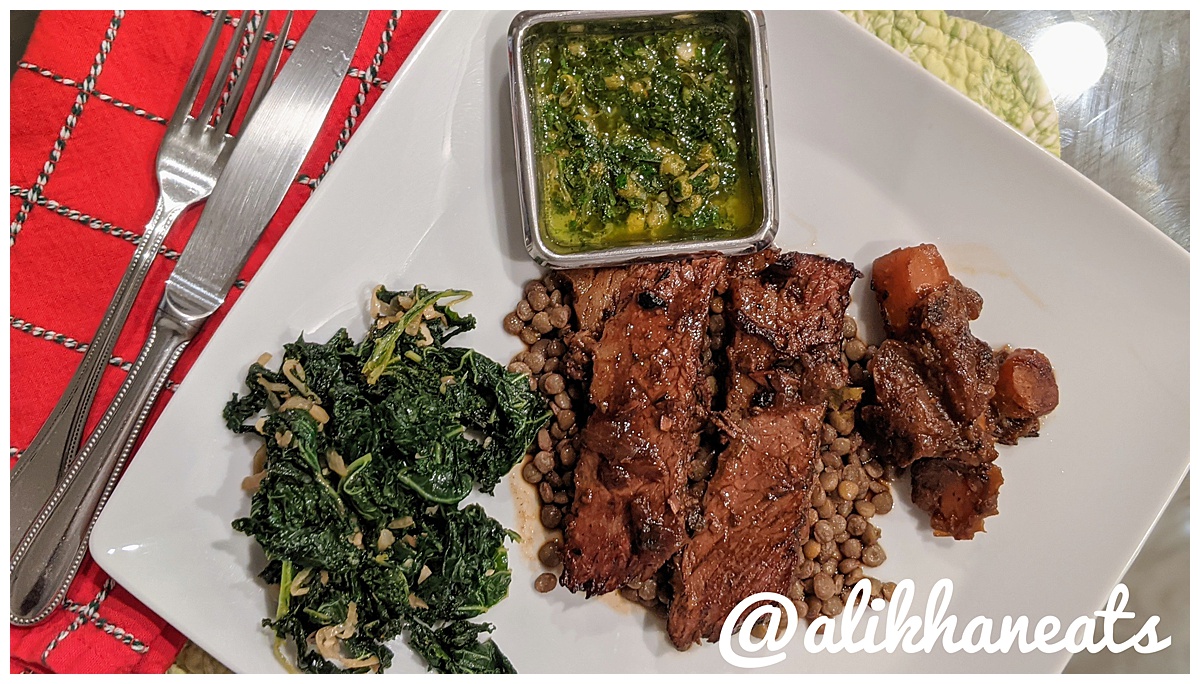

The day you are gonna serve it, carve the cold brisket to 1/4″ slices and place in a 400 degree oven for about 20 minutes or until its warm and starting to bubble. Keep an eye here, you don’t want to over cook this, after all it’s been a three day adventure. Oh and don’t forget those reserved juices, I heated mine in a small saucepan and drizzled it over the brisket slices.
Along with the brisket you also see some sautéed kale and lentils. These are loose and easy interpretations from Chef Goin’s sides. For the lentils, I cooked them in a rice cooker and when done tossed them in a bowl with some olive oil and salt. Yes, something that simple can be good enough. For the kale, I stripped the stalk, gave it a rough chop and sautéed it in olive oil with a bunch of garlic and a red chili flakes, salt and pepper to taste.
For my brood of three we ate this over a few days and with holiday time, I was backlogged with heavy winter dishes. I ended up employing the same overnight garlic and herb rub to my prime rib- that’s a keeper for sure. I will say that like another memorable brisket I made, the taste increases when you chill and reheat it. It’s the power of braises and stews: the water that combines bits of aromatics, seasoning and proteins intensifies with time. Same with curries. So give this the full three day treatment and maybe get some burgers on day 2.
[…] you caught my braised brisket recipe I posted in December, you might recognize the USDA Prime brisket. I saved the flat cut and kept it in the freezer. I […]
[…] a bad idea but it’s not the first time I’ve had professional chefs advocate for it. Suzanne Goin does so when braising a brisket in an enameled […]